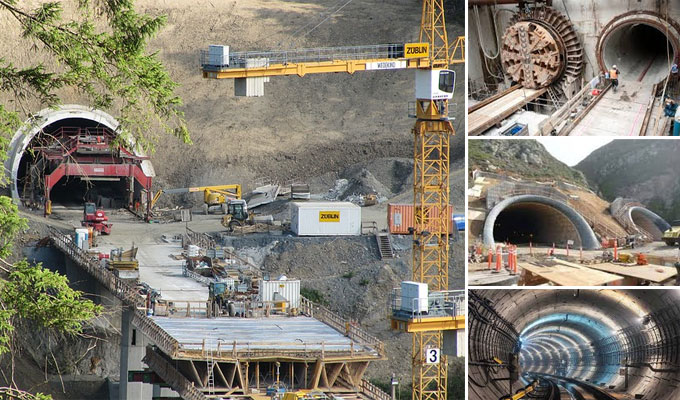
Importance Of Tunnel Alignment In Tunnel Construction
Tunnel is an underground passage which is made artificially. Tunnels are constructed in roads for rail traffics, utilities, and pass fresh water. Ratio of length and width of the tunnel should be 2:1.
Economic of Tunnel based on
1. Nature of soil and rock
2. Requirements of fill
3. Depth of cut > 18 m ? tunneling.
The position of the tunnel on the ground is called as tunnel alignment. Tunnel alignment can be horizontal or vertical. Horizontal alignment runs along the center of the tunnel and vertical alignment is used to define the changes in elevation of the tunnel. Before undertaking the tunnel, construction engineer must perform the tunnel alignment.
Features
A.) For increasing the quality and stability of the tunnel.
B.) It is used to reduce the number of transit trips.
C.) For reducing the impact of surface transit operations in different places.
Tunnel Alignment Depend on
1. Topography of particular area.
2. Various kind of environmental situation.
3. Entrance and exit point of specific area.
4. Alignment restraints.
Tunnel Alignment and Gradient
Tunnel alignment is very important step in tunnel making. If the calculation of tunnel alignment goes wrong then the tunnel would not meet at the end. While starting the work, the centerline is marked on the ground for giving the accurate length to the tunnel. After completed this process a survey is happened to ensure that the horizontal tunnel alignment and other levels are transferred to the underground position.
Important Steps
A.) As per the standard and recommendation the tunnel should be provided with a minimum gradient value.
B.) To achieve the shortest and cheapest route the tunnel alignment must be stayed straight.
C.) Engineers should check for the proper ventilation and lighting.
D.) The side drains should possess a gradient of 1 in 500 to achieve effective drainage.
Types of Tunnels
Types of tunnels are based on road, rail and utilities purpose, surrounding material like soft clay or hard rock and submerged tunnels.
Off-spur Tunnels: This type of tunnel is short length tunnels to prevent minor obstacles.
Slope Tunnels: This type of tunnel is constructed in steep hills for economic and safe operation.
Spiral Tunnels: When a certain type of tunnels is constructed in shape of loops then it is called as spiral tunnels. Base tunnels are made in narrow valleys with natural slopes. Length of tunnel is increased because of the process to avoid steep slopes.
Base Tunnels: This type of tunnels is constructed in valleys with natural slope.
Measurements and Alignments of Surface
Tunnel can be aligned in straight or an inclined manner. By using vertical shaft engineers can check the accuracy of alignment and levels. During tunnel surveying tunnel alignment and measurement can be checked. The process is called setting out of the tunnel. There are different steps to measure and align of the surface.
1. In this process at first a primary survey is performed by the particular traversing using theodolite to join the two ends of the tunnels.
2. After that engineers have to transfer the centerline or the surface alignment to the underground shafts.
3. The leaving of underground surface is performed as usual. To transfer the levels underground nearest benchmarks are used.
Required investigation at time of planning
A.) At first engineers have to plan or select the route.
B.) Route selection can be two way. One is water and other one is land.
C.) There are 3 options for water and land route. The options are immersed tunnels, mined tunnels, cut and cover tunnels.
D.) There are 4 types of tunneling under the mined tunnel. The tunneling are rock tunneling, soft ground tunneling, difficult ground tunneling, SEM tunneling.
Size of the Tunnel
1. Engineers can determine the size of the tunnel from utility aspect. Road tunnels ? number of traffic lanes. Railway tunnels ? gauge and number of trucks.
2. They also have to check the thickness of lining.
3. Clear opening is required for traffic.
Design criteria of Tunnel
Every tunnel needs a proper design. Every tunnel has its own design, geometry, alignment, and construction method.
A.) Spatial requirement.
B.) Underground stations.
C.) Fire life safety.
D.) Tunnel systems and operation.


